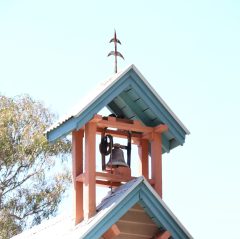A total of fifty-eight areas have been identified that are likely to be unmarked graves, along with an additional fifteen areas that may also be unmarked graves.
Hunter Geophysics report, March 2021
The March 2021 report (below) was done by Hunter Geophysics, a highly regarded expert in detecting lost or unmarked graves. It was not commissioned by the owner/developer the Shoalhaven Council commissioned it. It is the only independent report of the whole site.
The findings of this independent were deemed unacceptable by the developer/owner. He has sought and Heritage NSW granted an Excavation Permit to further investigate the site by so-called scraping. This has been opposed by the local Aboriginal Community who do not want the graves of their ancestors disturbed.
What you call investigation, we call desecration.
Alfred Wellington, CEO Jerrinja LALC.
On November 15th, 2022 Federal Minister Tanya Plibersek issued a protection order under section 9 of the Aboriginal and Torres Strait Islander Heritage Protection Act, it is now unlawful for any works to be carried out at the former church site for a period of 30 days.
hunter-geophysics-report-31-March-2021For an explanation of how ground Penetration Surveys work: go here
EARLIER GROUND PENETRATING RADAR SURVEYS
2015

In 2015 Shoalhaven City Council commissioned GBG Australia to conduct a survey of an area limited to where graves had previously been marked with wooden crosses. The survey report is here.
2018
In 2018 the hopeful developer commissioned a GPR report of his own. The contractor Peter Ellsmore and Associates who reported no graves was described as a Dial-Before-You-Dig contractor who did not appear to have expertise in archaeological work. The report is here. We have also included a critique of the survey by soil scientist, Dr Evan Christen.
2019
These 2019 GBG Australia reports were commissioned by the developer. The credentials of the contractor are not at issue, but the surveys were partial and limited areas designated by the owner. They did however find some evidence of potential graves.
The October 2019 report (P.9) stated rather alarmingly the GBG has been informed that during the demolition of the hall, two holes were filled with rubbish and covered over with soil. The exact sites were not known, but the GPR data has found two large areas of high amplitude and dipping layers. These are believed to be these dumps. The anomalies are approximately 1 m deep. The character of these anomalies is unlike what would be expected in a grave, as the amplitudes are very high, and their size is much larger than a grave would be expected to be. The anecdotal evidence also correlates with the rough size, shape and location of the anomalies.
This raised the issue of perhaps a hole much larger than a grave was dug when the hall was demolished. The anecdotal reference to recent holes in a possible grave yard was alarming.
The HHA has been told that, following complaints from the public and the HHA the SCC carried out an an independent investigation paid for by the owner. The report was not to be made public. A reply to the HHA (Colin Wood, Section Manager – Building & Compliance Email 14 Jan 2020) stated The report is owned by the person who paid for it…It is not usual for such a report to be made public. We took this to mean Stephen Bartlett owned the report and did not want it made public.
The reports are here.
